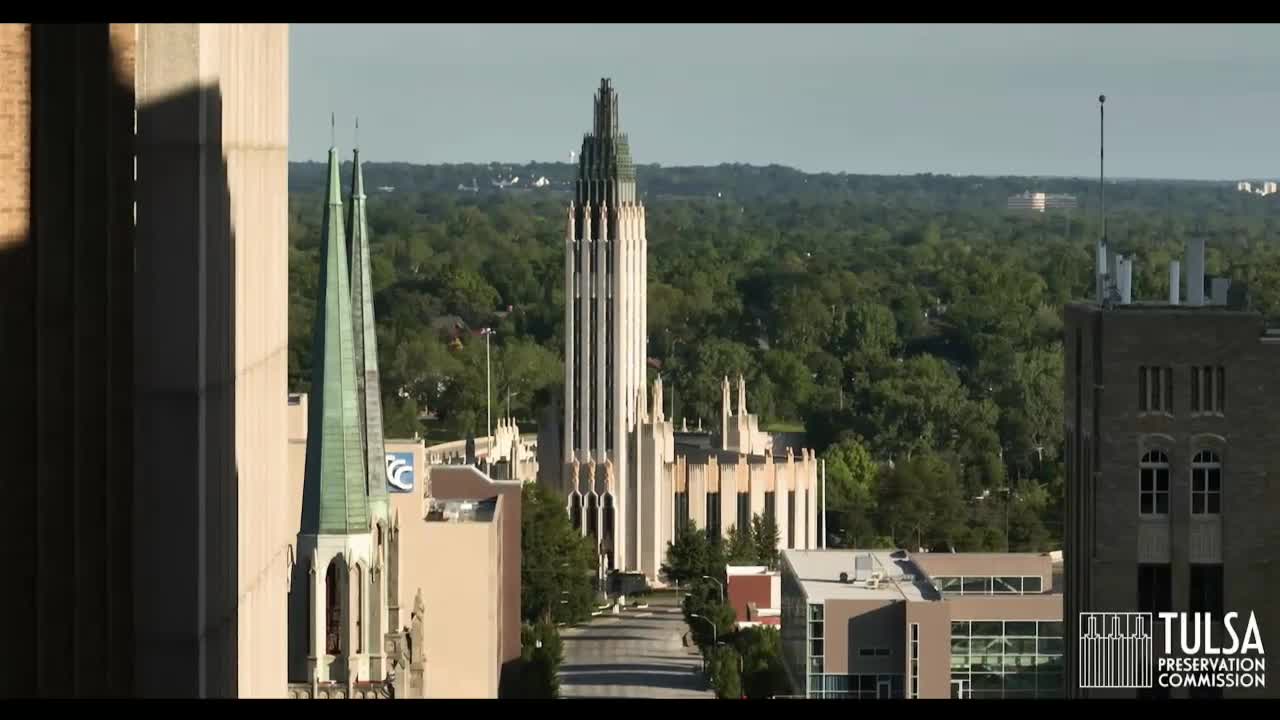Tulsa's Iconic Churches Showcase Faith and Architectural Innovation
August 14, 2025 | Tulsa, Tulsa County, Oklahoma
This article was created by AI summarizing key points discussed. AI makes mistakes, so for full details and context, please refer to the video of the full meeting. Please report any errors so we can fix them. Report an error »

Tulsa's rich architectural heritage is vividly showcased through its iconic churches, which serve as both spiritual havens and historical landmarks. In a recent exploration of the city's Cathedral District, three sacred spaces stand out for their unique designs and cultural significance.
First on the list is the Boston Avenue Methodist Church, a national landmark completed in 1929. This Art Deco masterpiece, designed by architect Bruce Goff and artist Ada Robinson, breaks from traditional church architecture with its vertical lines and abstract ornamentation. Its soaring central tower and streamlined details not only highlight modernism but also represent one of the most important art deco churches in the United States.
Next, the Holy Family Cathedral, built in 1914, serves as the spiritual heart of Tulsa's Catholic community. Its neoclassical design features masonry walls and steel-framed spires, with a striking 251-foot main spire adorned with four large clocks. This cathedral, one of the oldest in Tulsa, evokes the grandeur of European cathedrals and stands as a foundational element in the city's narrative.
Lastly, the First Methodist Church, located at the corner of Eleventh and Boulder, has a history that dates back to 1886. Originally a modest white chapel, the church evolved alongside the city, culminating in the construction of its current grand structure in 1921. Built in the perpendicular Tudor Gothic style, its pointed arches and vaulted ceilings create an architectural expression of reverence, symbolizing the congregation's deep-rooted faith.
These churches not only reflect Tulsa's architectural ambition but also embody the community's spirit and devotion. They remind us that the city's history is woven with threads of faith, artistry, and community, shaping its identity beyond mere industry. As Tulsa continues to grow, these sacred spaces remain vital links to its past, inviting residents and visitors alike to appreciate the stories they tell.
First on the list is the Boston Avenue Methodist Church, a national landmark completed in 1929. This Art Deco masterpiece, designed by architect Bruce Goff and artist Ada Robinson, breaks from traditional church architecture with its vertical lines and abstract ornamentation. Its soaring central tower and streamlined details not only highlight modernism but also represent one of the most important art deco churches in the United States.
Next, the Holy Family Cathedral, built in 1914, serves as the spiritual heart of Tulsa's Catholic community. Its neoclassical design features masonry walls and steel-framed spires, with a striking 251-foot main spire adorned with four large clocks. This cathedral, one of the oldest in Tulsa, evokes the grandeur of European cathedrals and stands as a foundational element in the city's narrative.
Lastly, the First Methodist Church, located at the corner of Eleventh and Boulder, has a history that dates back to 1886. Originally a modest white chapel, the church evolved alongside the city, culminating in the construction of its current grand structure in 1921. Built in the perpendicular Tudor Gothic style, its pointed arches and vaulted ceilings create an architectural expression of reverence, symbolizing the congregation's deep-rooted faith.
These churches not only reflect Tulsa's architectural ambition but also embody the community's spirit and devotion. They remind us that the city's history is woven with threads of faith, artistry, and community, shaping its identity beyond mere industry. As Tulsa continues to grow, these sacred spaces remain vital links to its past, inviting residents and visitors alike to appreciate the stories they tell.
View full meeting
This article is based on a recent meeting—watch the full video and explore the complete transcript for deeper insights into the discussion.
View full meeting
